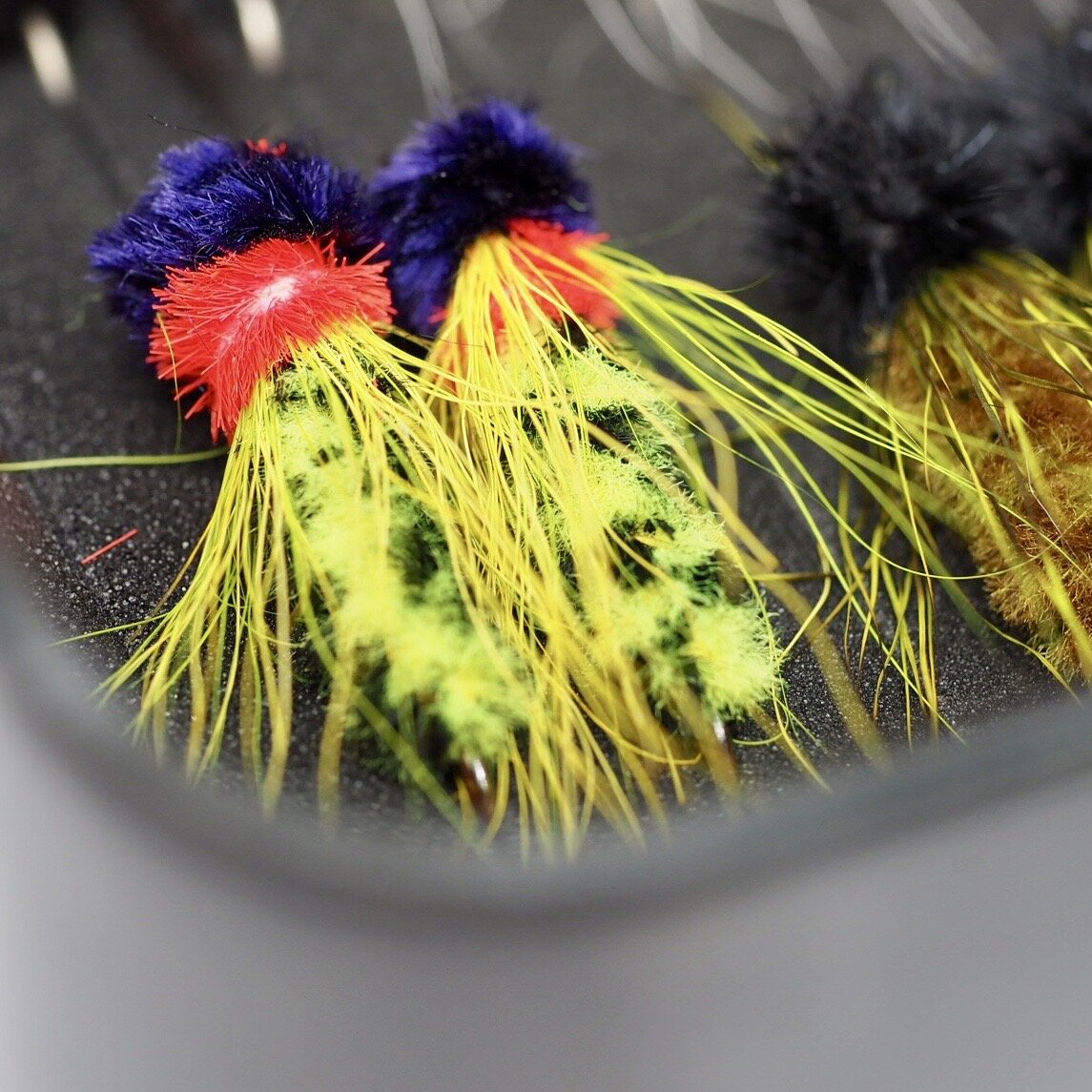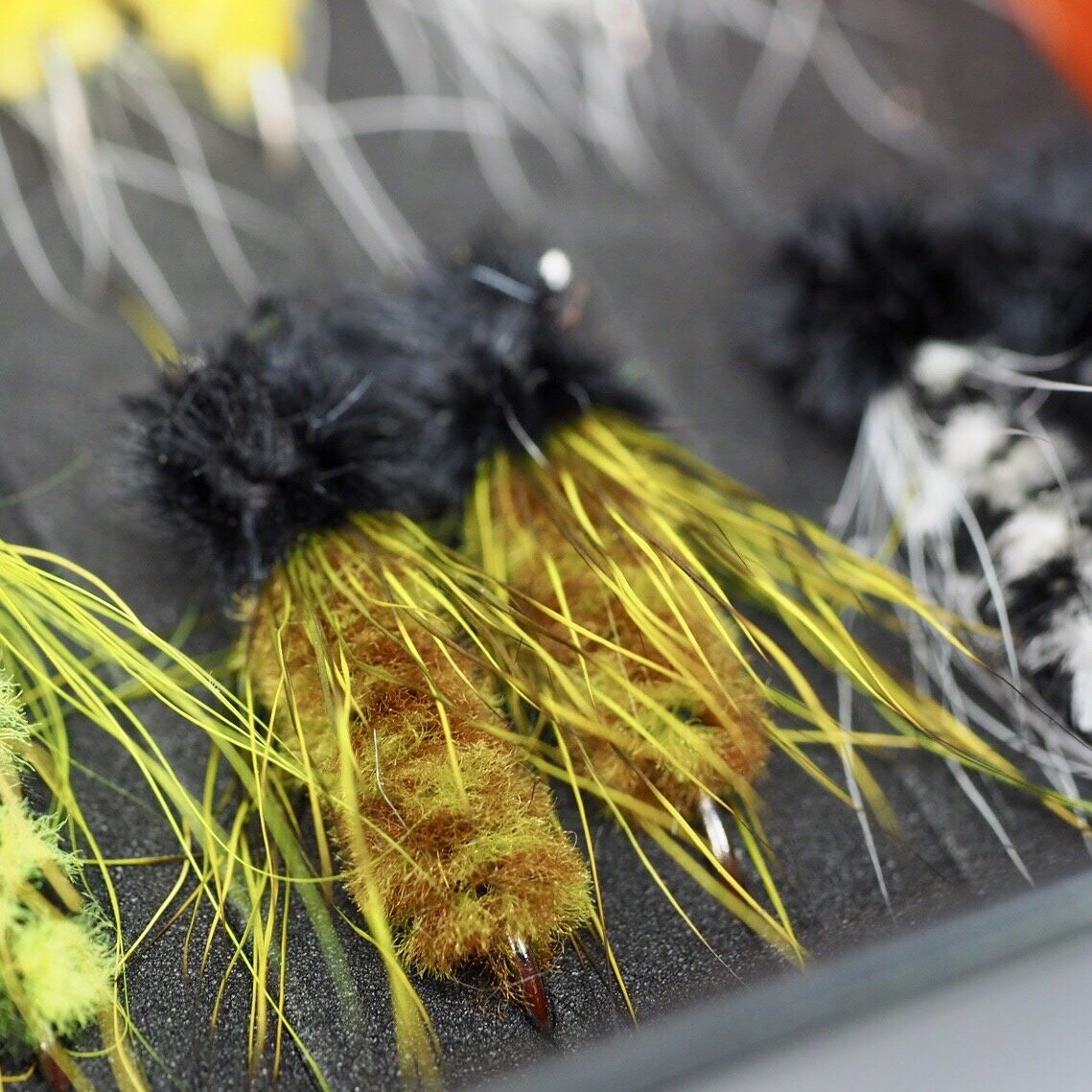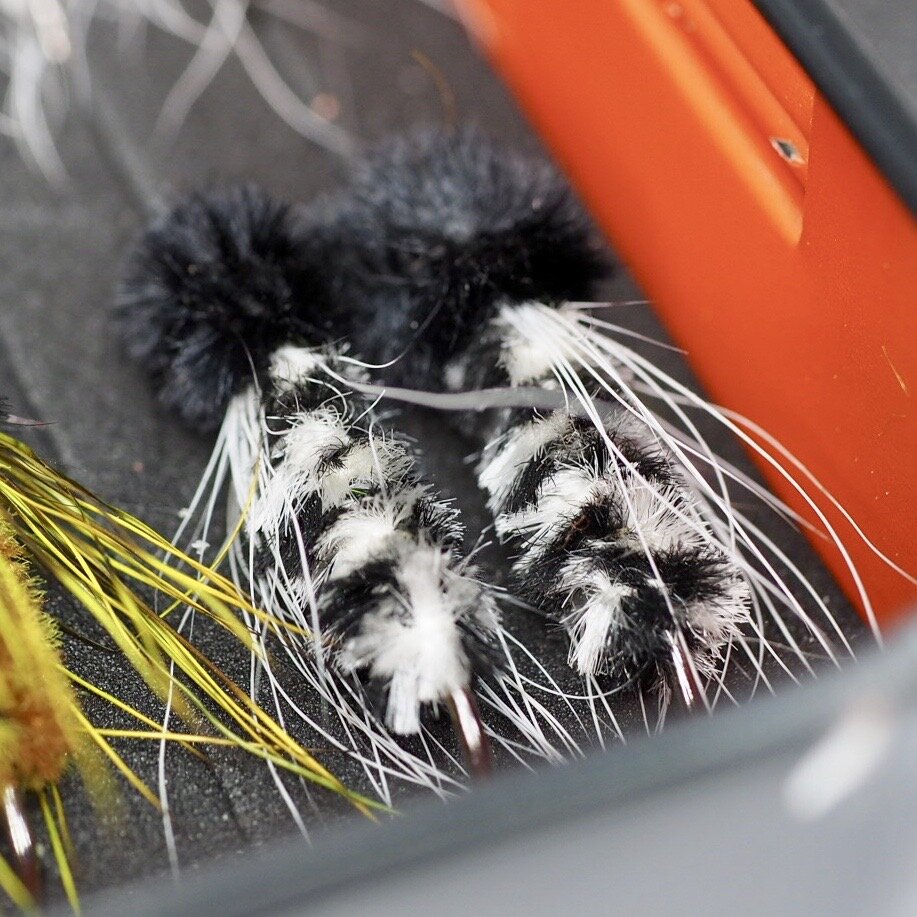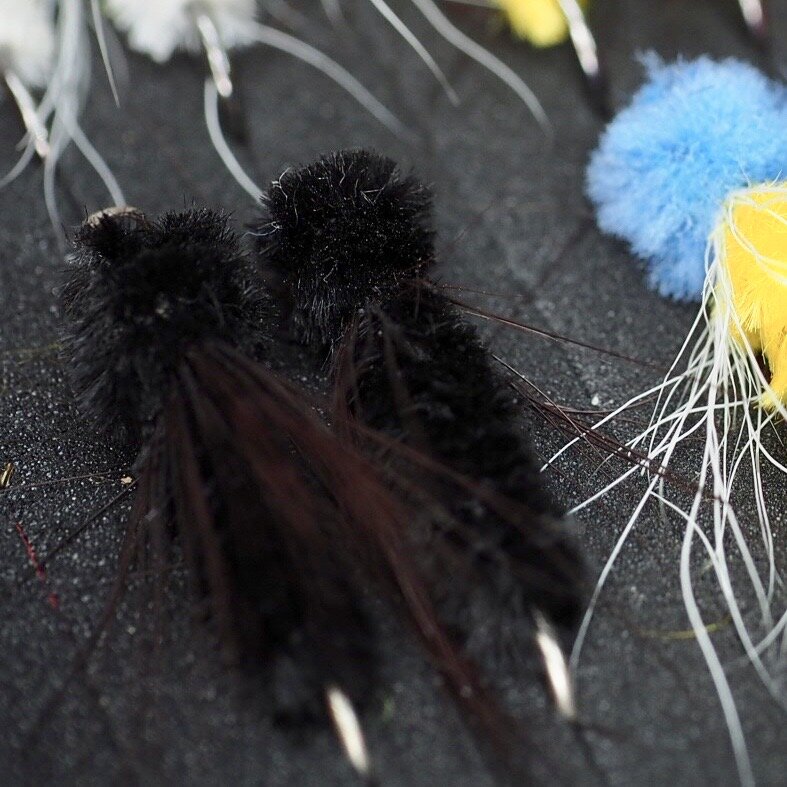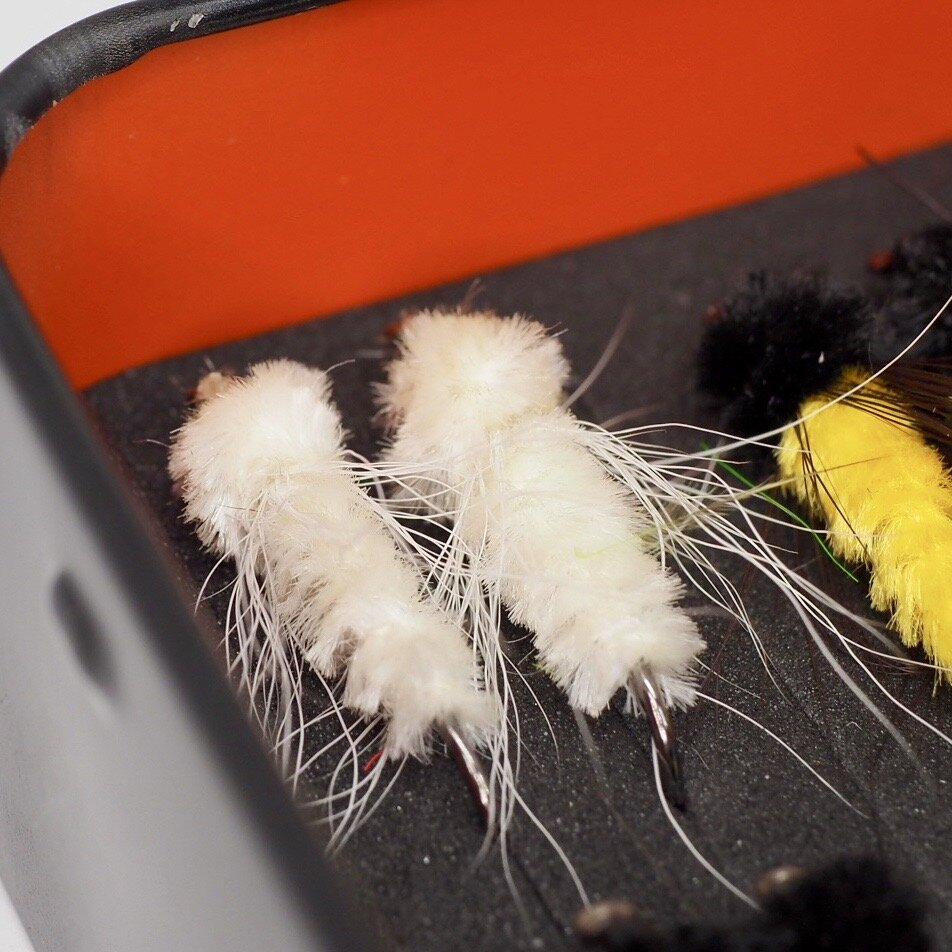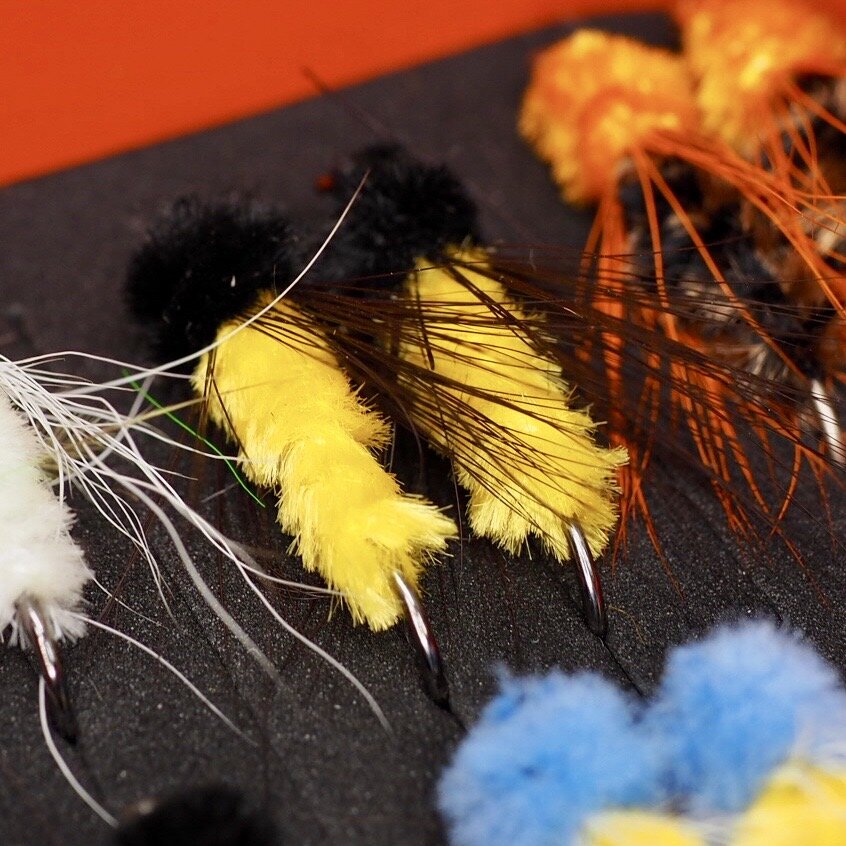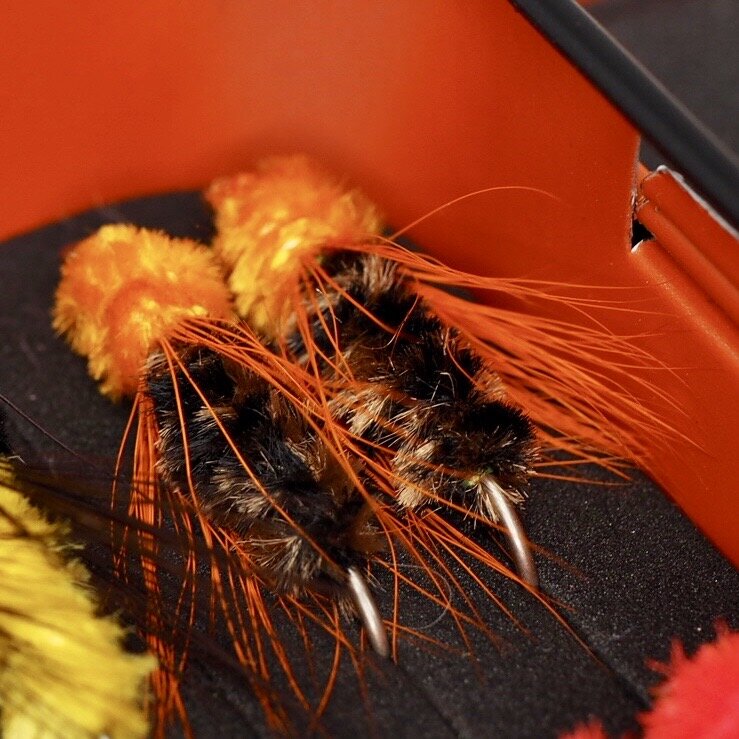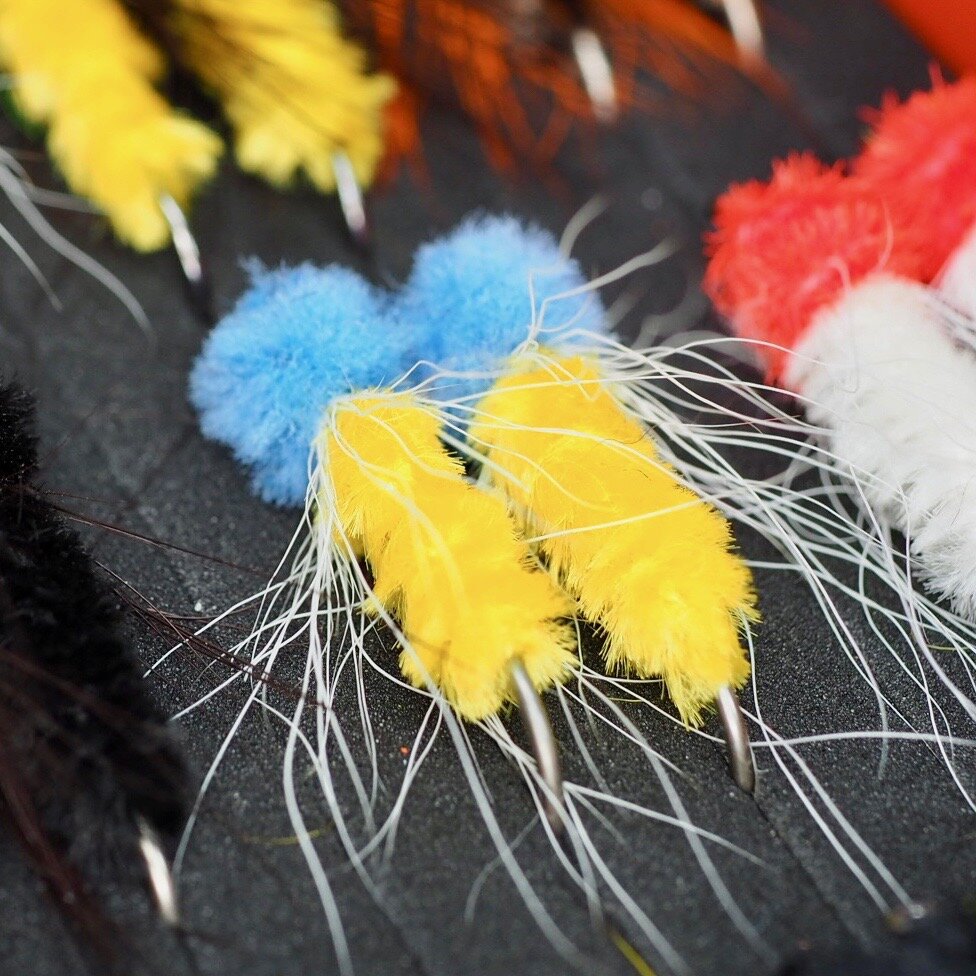This week's Fly Tying Friday post will discuss a variation of one of my favorite warmwater fly patterns, the James Wood Bucktail. I have written a bit about this pattern in the past, so I will only give a brief overview.
The original James Wood Bucktail a fly designed by Harry Murray for smallmouth bass.
Harry Murray of Murrays Fly Shop in Edinburg, Virginia, designed the James Wood Bucktail as an imitation of a baby sunfish. It is impressionistic at best, as it doesn't look like any sunfish I have ever seen, but the fish strongly disagree. Harry used it primarily for smallmouth bass that roam the large rivers in his neck of the woods. I stumbled upon the pattern many years ago, and it has been a staple in my fly boxes ever since. I have shrunk the pattern down in size and found that it is a deadly fly on all species of panfish and the larger predators it was initially designed for.
I tie and fish this fly in over a dozen color variations. One of my favorites is a version I call the Pumpkinseed. This version of the JWB is a kaleidoscope of colors just like its namesake, the pumpkinseed sunfish. This subsurface pattern works well on all species of sunfish, including crappies. I have racked up impressive numbers of largemouth bass and chain pickerel on this fly as well, despite its diminutive size.
The red tip on the earflap of a pumpkinseed sunfish is one of its most recognizable features. It seemed only right to include it on the fly.
Like the original James Wood Bucktail, this is an easy pattern to tie. However, this variation has a few extra steps/materials because of the three different chenille colors (opposed to two) for the body and a mix of colored bucktails for the wing/collar. You can probably make a solid argument that the three colors in the body may not be necessary, but I like the addition of the bright red hot spot that simulates the ear tag on the actual Pumpkinseed.
The key to tying the wing on a James Wood Bucktail is to keep it sparse. In this case less is more!
When folks attempt to tie the James Wood Bucktail, the most common mistake I see is using too many bucktail fibers to create the wing/collar. The most important thing to remember when tying this fly is to keep the wing sparse. I probably use no more than 20-25 individual hair fibers when creating the 360-degree wing/collar. This sparsity is essential to get a proper sink rate and produce the right movement and action in the water. I have a step-by-step tutorial for tying the fly on the website, and a short video on my YouTube channel, if you need help tying the pattern. There is an older video on YouTube by Joe Cornwall that illustrates the techniques used to tie the pattern as well.
A chunky bluegill that fell victim to the Pumpkinseed JWB.
I fish this variation much like the other versions of the JWB, including the original. I prefer a slow, steady hand twist retrieve instead of a stop and go retrieve, which is often the result when you traditionally strip the fly. The goal is to have the fly slowly glide through the water.
Crappies often take a James Wood Bucktail on the drop. In this case I found the fish over some submerged brush. You can see the fish clearly indicated on the fish finder. To seal the deal a chartreuse/purple JWB was cast over the structure, letting the fly slowly to the depth the fish where holding at. They would pick it up every time!
In addition to actively retrieving the fly, I often fish this pattern like a drop bait. It has a slow sink rate, and it maintains a horizontal posture when it drops. This is a killer presentation for fish holding tight to cover. Most of the crappie I catch are caught using this method. I cast the fly to crappie holding structure like the edges of a fallen tree and allow the fly to sink without retrieving it. I keep the rod tip low to the water's surface and keep the line as straight as possible. Takes are often challenging to detect, and I am sure I miss more than I see or feel as crappie can inhale and expel a fly on the drop without the angler ever knowing. To prove this point, I often find a fish on the line when I pick up to cast or start a retrieve without ever detecting a strike!
This bluegill is almost as colorful as the fly in its mouth!
I like to swim the fly along shaded banks, and other places bluegills like to congregate. I will often retrieve the fly parallel to the bank instead of casting towards it, something that is easy to do when fishing from a float tube or kayak. This method allows you to cover more fish-holding water with each cast.
Largemouth bass often take James Wood Bucktails in a unique manner. They seem to just inhale the fly without much fanfare.
Bluegills and other sunfish tend to take the fly aggressively, but the take of a bass is often quite different. More often than not, they seem to swim up behind the fly and inhale it without disturbing the water. This type of take feels like heaviness on the line as opposed to obvious jerk or tug. If you feel anything unusual, set the hook and hold on!
This Pumpkinseed JWB tied with an orange and black body racked up some serious numbers of fish on a recent fishing trip.
On a recent trip, I decided to tie on a fresh Pumpkinseed JWB and keep an accurate record of its performance. The fly pictured above caught thirty-six bluegills, nine crappies, four bass (ranging from 12 -16 inches), and one small pickerel before being inhaled and promptly bitten off by a second larger one. It was the only fly I used the entire afternoon. After losing it, I decided I had enough fishing for the day and paddled my way back to the truck.
Big bluegills can’t resist a JWB slowly gliding through the water.
Pattern Recipe:
The Pumpkinseed James Wood Bucktail
Hook: Allen S402BL size 8 (use an Allen S402 if you prefer barbed hooks)
Thread: Semperfli 6/0 Classic Waxed Thread
Body: Variegated chenille in colors that imitate the Pumpkinseed. You have several choices here as variegated chenille comes in over a dozen color combinations. I use variegated usually use chartreuse/black for the body, but other bright color combos also work well.
Wing: A mix of green, yellow and blue bucktail. A combo pack is a great way to get a selection of different colors without spending a lot of money. Remember you should tie the wing sparsely, and it should wrap 360 degrees around the hook shank.
Head: Bright red and dark purple (or black) medium chenille.
If you are in need of fly tying materials for this fly or any other pattern please consider purchasing them from our shop. Your patronage allows us to keep the lights on and continue to bring this type of content.


